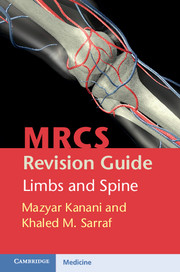2 - Critical care
from Section 1 - Basic science
Published online by Cambridge University Press: 05 August 2015
Summary
Agitation and sedation
Give some causes of acute confusion in the postoperative patient
• Pain, anxiety and disorientation can all commonly occur in patients in intensive care.
• Sepsis: systemic infection, or localized to chest, urinary tract, wound, etc.
• Hypoglycaemia, or hyperglycaemia with ketoacidosis.
• Respiratory failure, leading to hypoxaemia or hypercarbia: precipitating causes apart from chest infection include acute pulmonary oedema, pneumothorax, pulmonary embolism and sputum retention or atelectasis.
• Hypotension of any cause: e.g. bleeding, myocardial infarction, or arrhythmia leading to reduced cerebral perfusion.
• Acute renal or hepatic failure.
• Electrolyte disturbance: most commonly hypo- or hypernatraemia.
• Water imbalance: both dehydration and fluid overload.
• Acute urinary retention, especially in the elderly.
• Drugs: opiate analgesia, excess sedative drugs, anticholinergics.
Which investigations should you perform?
A full history and examination must be carried out so that the most pertinent investigations are performed. These investigations include:
• Arterial blood gas analysis: this determines the base excess and respiratory function,
• Serum glucose,
• Full blood cell count,
• Serum electrolytes: sodium, potassium, calcium, phosphate, magnesium, lactate (strictly speaking, a metabolite), urea and creatinine,
• Liver function tests,
• Sepsis screen: blood cultures, wound swab, urine and sputum cultures,
• Radiology, such as a chest radiograph,
• Electrocardiogram (ECG), for arrhythmias and myocardial infarction.
What is the purpose of sedation in the critical care setting?
• Anxiolysis,
• Analgesia,
• Amnesia,
• Hypnosis.
Thus, there is a reduction in the level of consciousness, but with retention of verbal communication. There is much variability on which permutation of these effects individual agents produce.
Therefore, from a practical perspective in the intensive care setting, sedative agents are used to permit tolerance of endotracheal tubes, suctioning and other bedside procedures.
- Type
- Chapter
- Information
- MRCS Revision Guide: Limbs and Spine , pp. 23 - 50Publisher: Cambridge University PressPrint publication year: 2012



